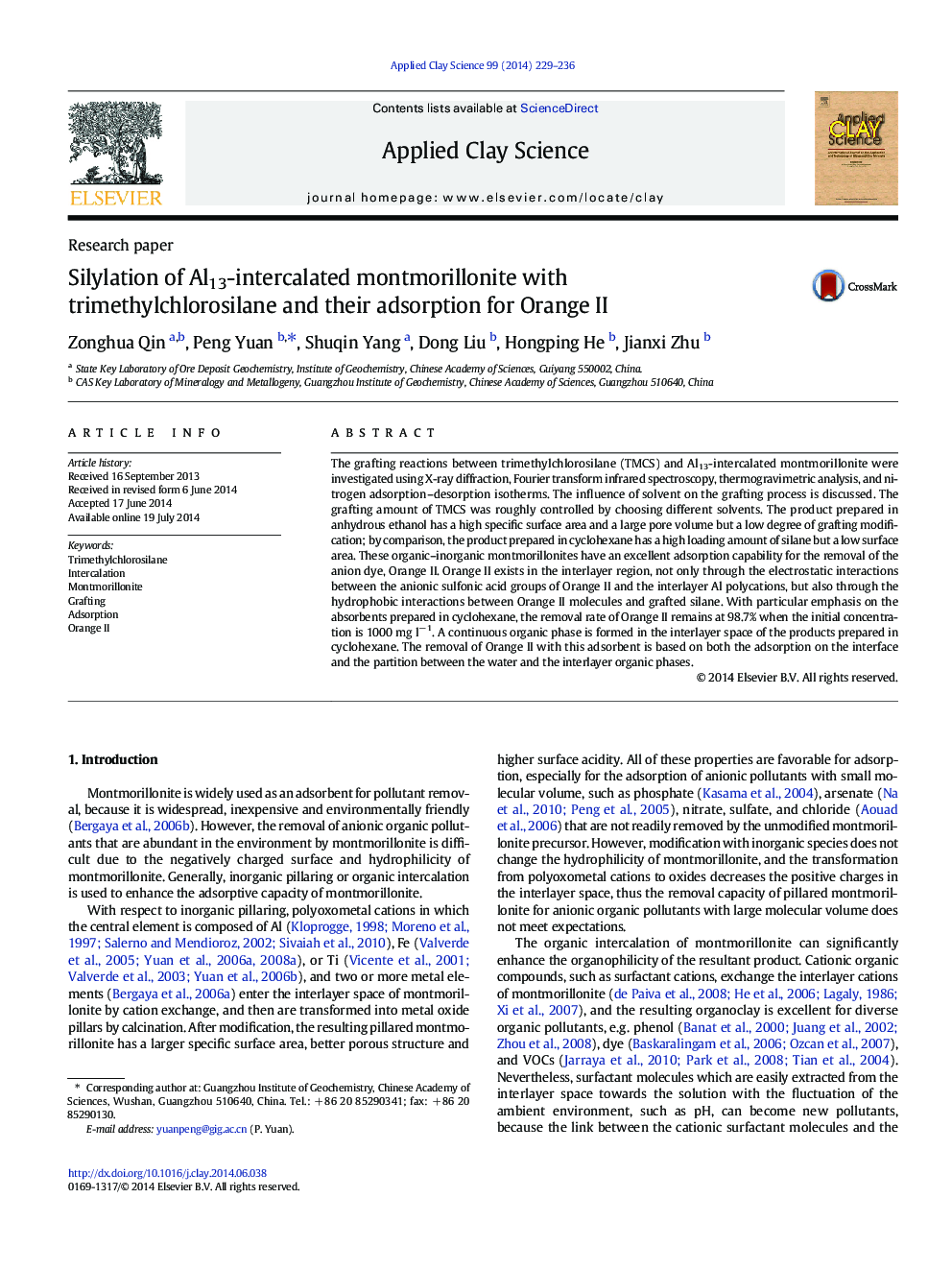| کد مقاله | کد نشریه | سال انتشار | مقاله انگلیسی | نسخه تمام متن |
|---|---|---|---|---|
| 1694754 | 1519079 | 2014 | 8 صفحه PDF | دانلود رایگان |

• We modified montmorillonite with both Al Keggin cations and trimethylchlorosilane.
• This material possesses a controllable porosity by changing solvent in synthesis.
• We used these composite modified clays as adsorbents for the removal of Orange II.
• The removal mechanisms of Orange II by these hybrid clays were investigated.
The grafting reactions between trimethylchlorosilane (TMCS) and Al13-intercalated montmorillonite were investigated using X-ray diffraction, Fourier transform infrared spectroscopy, thermogravimetric analysis, and nitrogen adsorption–desorption isotherms. The influence of solvent on the grafting process is discussed. The grafting amount of TMCS was roughly controlled by choosing different solvents. The product prepared in anhydrous ethanol has a high specific surface area and a large pore volume but a low degree of grafting modification; by comparison, the product prepared in cyclohexane has a high loading amount of silane but a low surface area. These organic–inorganic montmorillonites have an excellent adsorption capability for the removal of the anion dye, Orange II. Orange II exists in the interlayer region, not only through the electrostatic interactions between the anionic sulfonic acid groups of Orange II and the interlayer Al polycations, but also through the hydrophobic interactions between Orange II molecules and grafted silane. With particular emphasis on the absorbents prepared in cyclohexane, the removal rate of Orange II remains at 98.7% when the initial concentration is 1000 mg l− 1. A continuous organic phase is formed in the interlayer space of the products prepared in cyclohexane. The removal of Orange II with this adsorbent is based on both the adsorption on the interface and the partition between the water and the interlayer organic phases.
Figure optionsDownload as PowerPoint slide
Journal: Applied Clay Science - Volume 99, September 2014, Pages 229–236